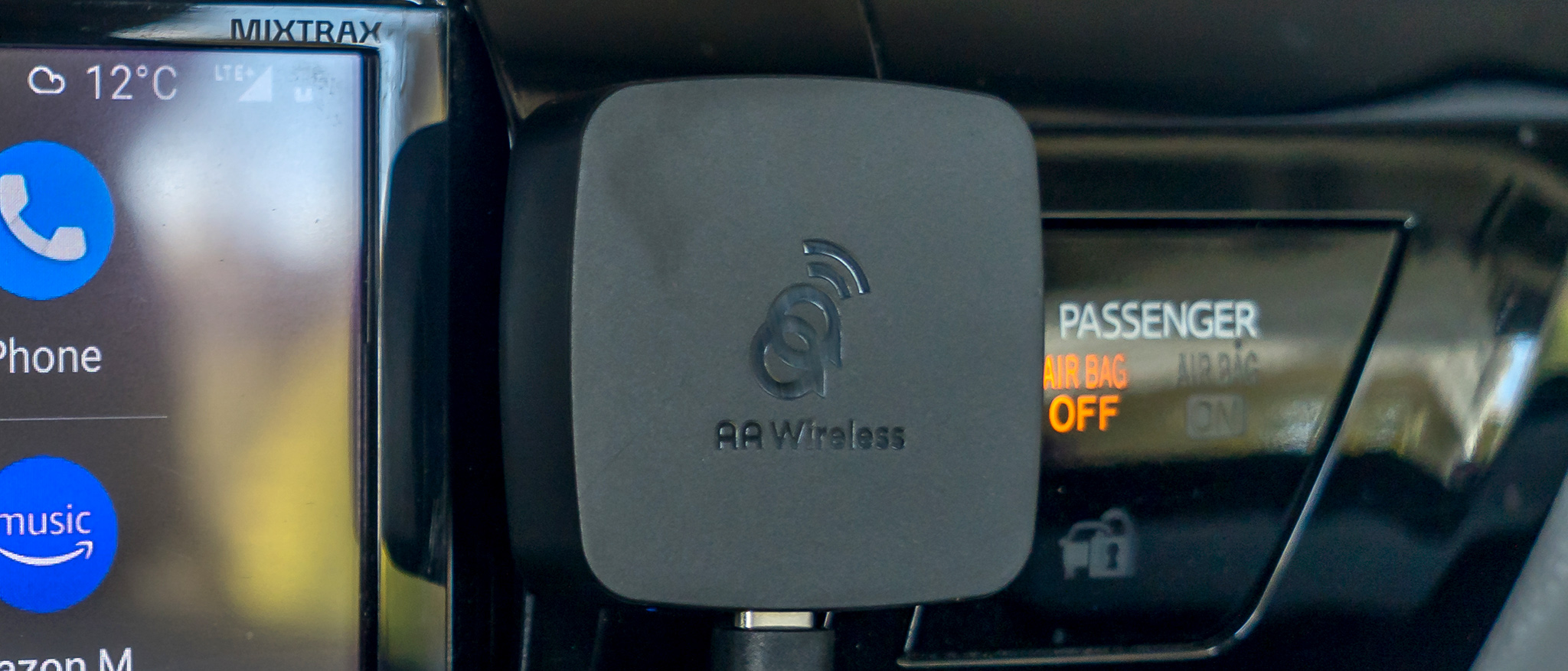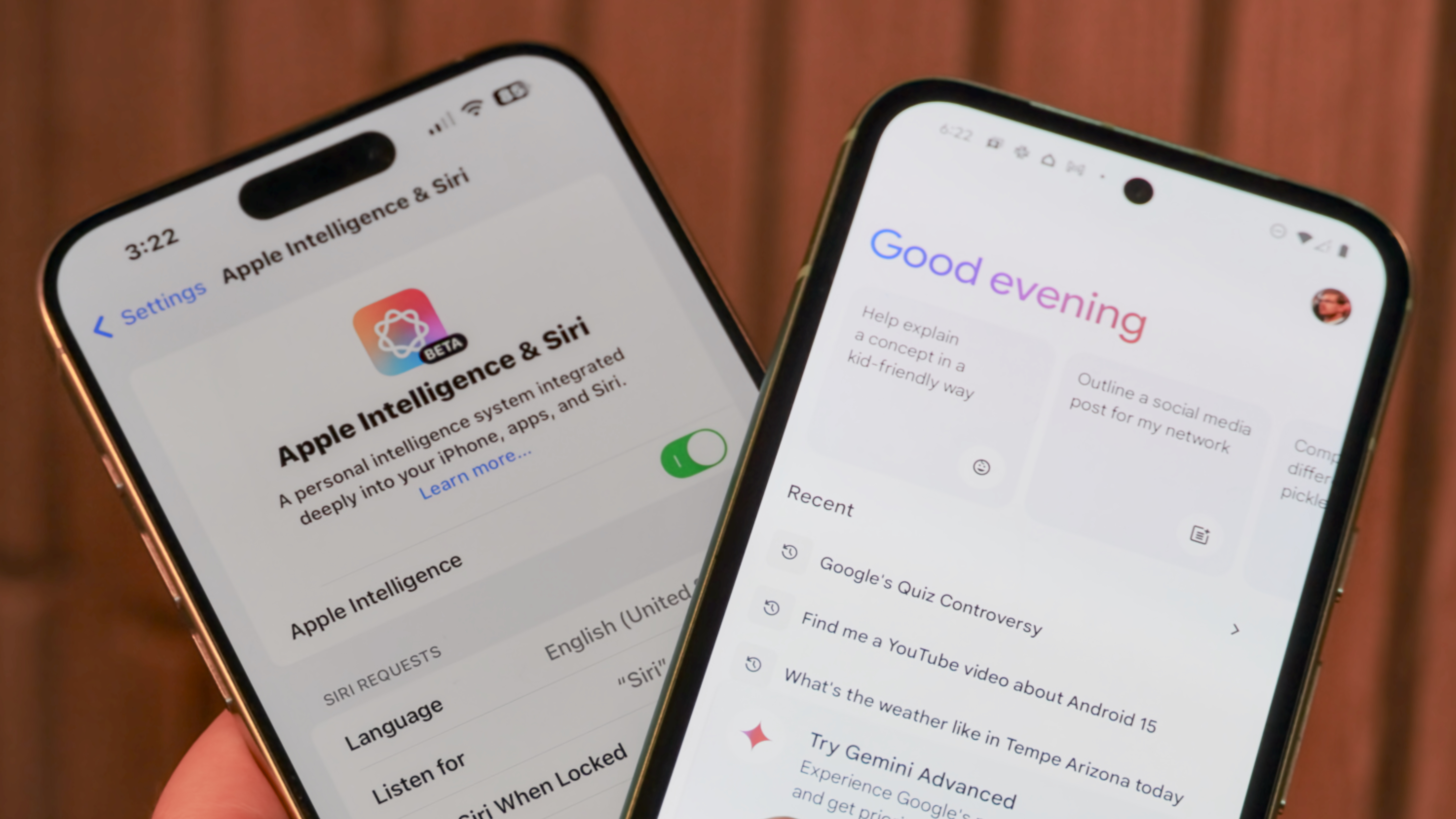Android Central Verdict
The AAWireless has always existed to serve one purpose, and that's to let you run Android Auto without cables from your phone. Set this up, and you'll see why the whole thing feels liberating.
Pros
- +
Small and lightweight
- +
Easy setup through app
- +
Android Auto runs smoothly
- +
No latency issues while running
- +
Lets you charge wirelessly
Cons
- -
Weird connectivity blips
- -
No adhesive to stick it anywhere
- -
Advanced features in app can be confusing
Why you can trust Android Central
Android Auto is now a common feature in vehicles today, but not all of them give it to you wirelessly. AAWireless was one of the first to tackle this in the aftermarket, initially starting out as an Indiegogo campaign and now readily available online. Its premise was always too simple: use your phone with Android Auto without plugging in any cables.
Small and easy to set up, the device delivers on its premise for those who want to keep it simple, yet also adds additional features and tweaks to ensure more tech-savvy drivers have workarounds in case things don't work as they should.
AAWireless: Price and availability
AAWireless first came to market under a crowdfunding campaign in 2020 and its success has broadened availability online through Amazon and its own website. The $90 price stayed consistent, and fluctuations aren't common, unless there is a promotion or sale. As competition grows in this space, a price drop could always happen.
AAWireless: What's good
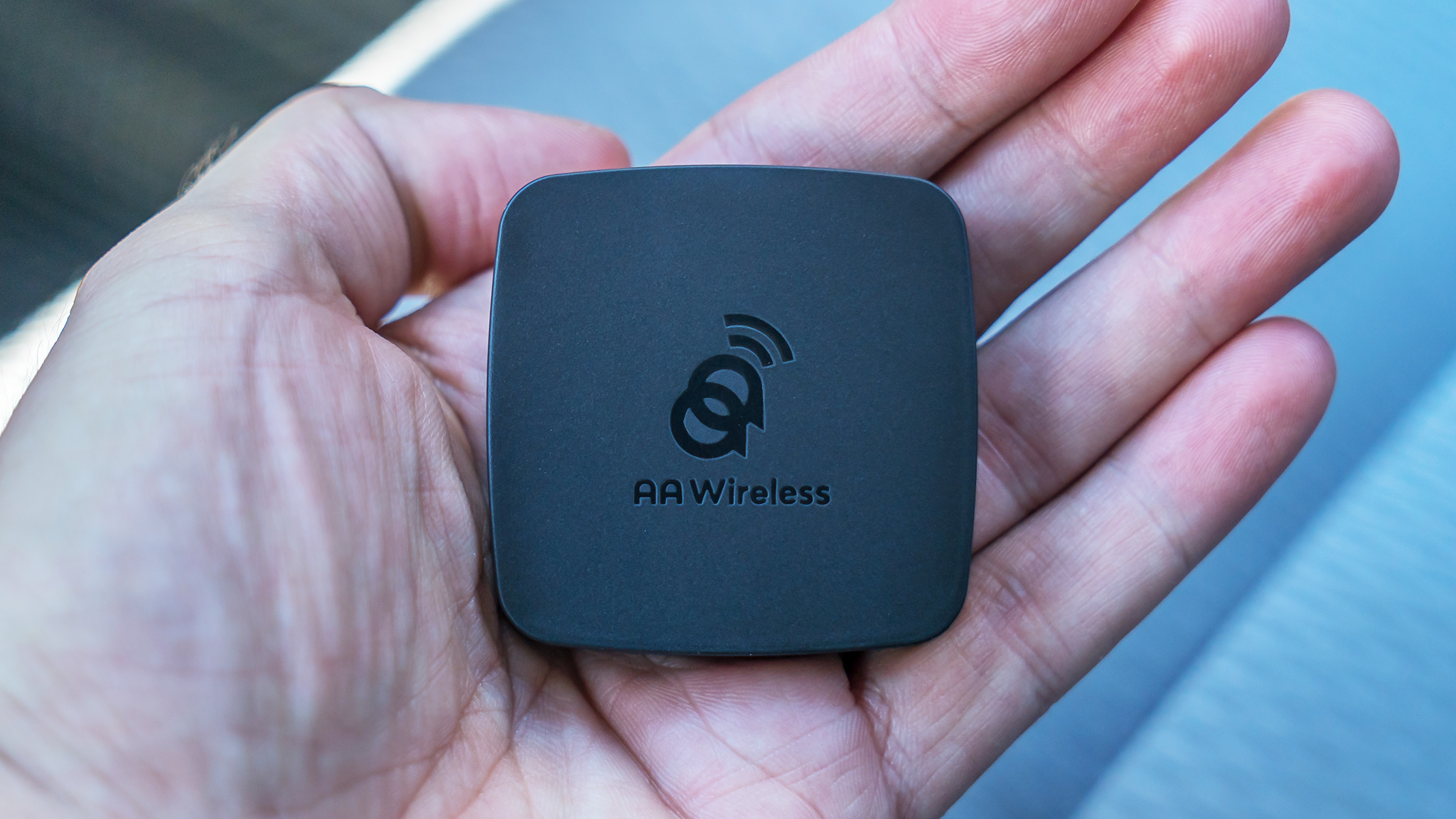
For a long while, the AAWireless was a tough product to get one's hands on, especially in 2021 when Indiegogo backers got the first batches before everyone else could see what the fuss was all about. When first introduced in 2020, the idea behind it was not only novel but highly necessary.
Automakers were including wireless charging pads in their vehicles, while consumer electronics vendors were making all sorts of wireless charging cradles and mounts. With very few exceptions, the problem was that you couldn't use Android Auto unless you plugged your phone into the car stereo system.
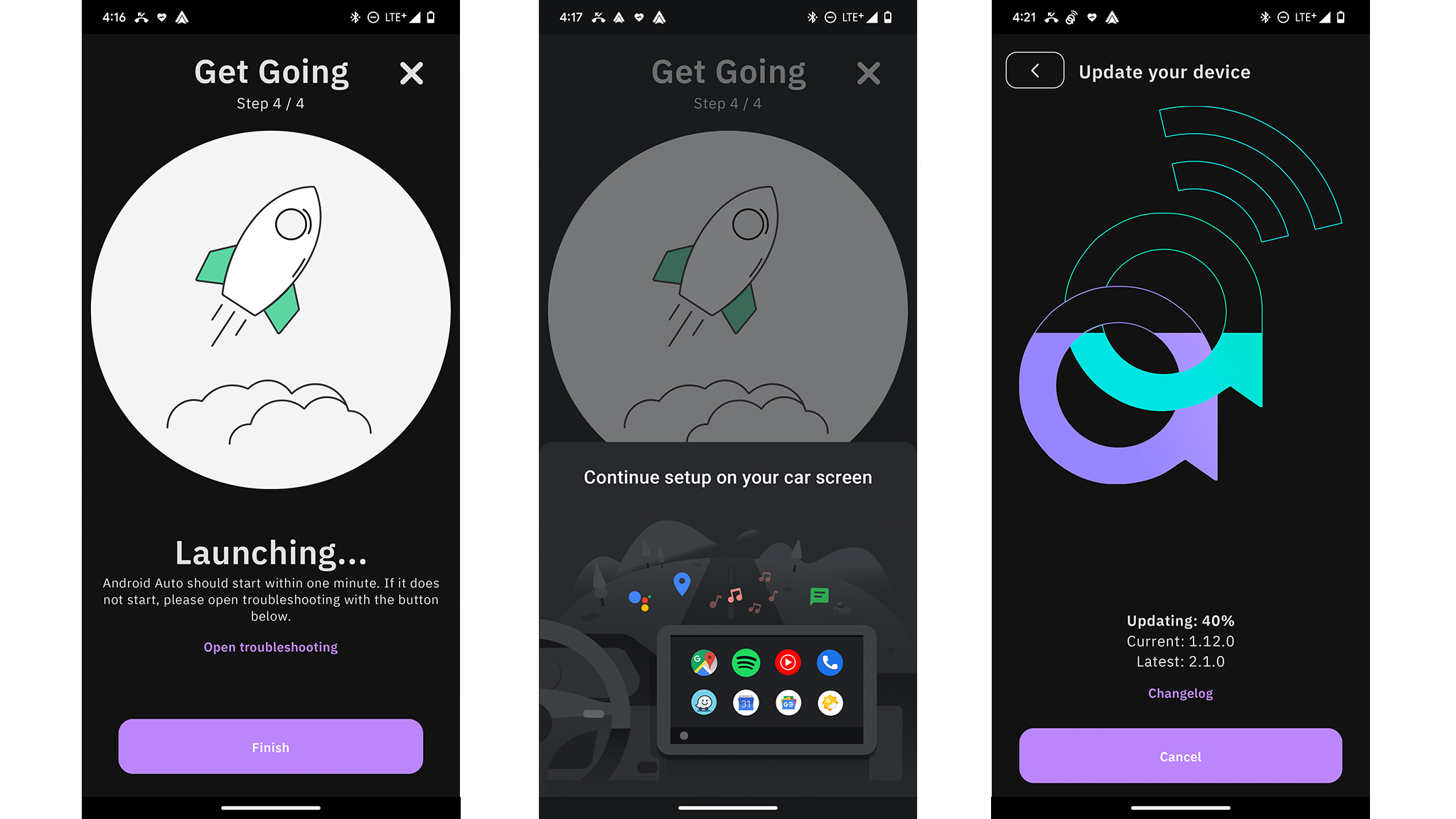
Even though wireless connectivity is growing in newer vehicles, so many out there simply don't have that option. Same with those using aftermarket head units, as I do. Setting up the AAWireless was a fairly easy process because the AAWireless app walked me through every step. If you're not sure how to enable wireless Android Auto on your phone, the app includes a handy tutorial to take care of that. Including an update to the firmware from the outset, I was up and running in less than 10 minutes.
There's not much to it, really. Plug the dongle into the correct USB port, where it will flash green, and once paired with your phone, the LED turns blue to indicate a solid connection. There were a couple of hiccups along the way, though, so not everything was smooth, like how it took three attempts to finally download and install the firmware.
Get the latest news from Android Central, your trusted companion in the world of Android
It's a small device—like an overgrown box of matches—and very lightweight. Depending on where your USB port is, you might be able to get away with hiding it in the center console or some other nook in the cabin. I didn't have that luxury, so tried to improvise, which I'll touch on later.
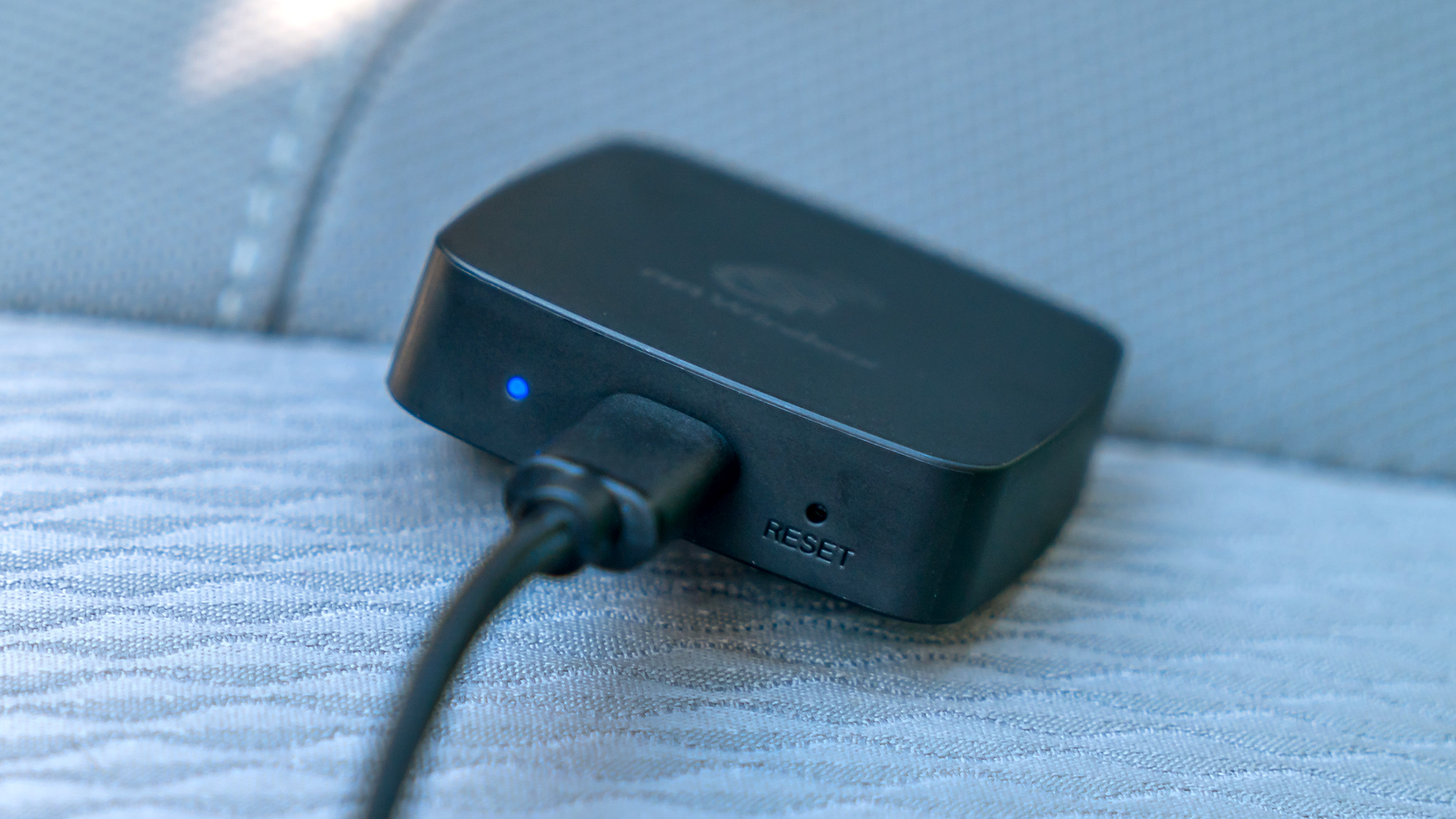
Once Android Auto appears, it will work as if you were plugged in. I did notice some interesting functional issues along the way, one of which involved starting the car. Basically, if I was using the phone for anything when starting the car, be it sending a text or checking a restaurant rating, the AAWireless dongle would try to connect, only to abort each time. It wasn't until I stopped and put the phone down that the Android Auto interface popped up.
While the app doesn't address this particular instance, it is chock full of workarounds for other potential challenges that might come up.
GM Fix addresses an issue where the head unit in some GM vehicles will occasionally reboot due to unstable pairing with a phone. VAG Crash does the same thing for Volkswagen and Skoda vehicles. Disable Media Sink will playback audio through the phone speaker instead of the car stereo if you ever need to do that. Disabling the Passthrough means you can tinker a little more, like adjusting the DPI (dots per inch) displayed, removing tap restrictions, and more.
Remove tap restrictions negates the limits Google imposes on how much you can tap or swipe on the screen for certain apps. If you've ever tried to scroll through a playlist on Spotify, you know what I mean. The one problem with enabling it is that it can bring out bugs, like dodgy location tracking on Google Maps, for instance.
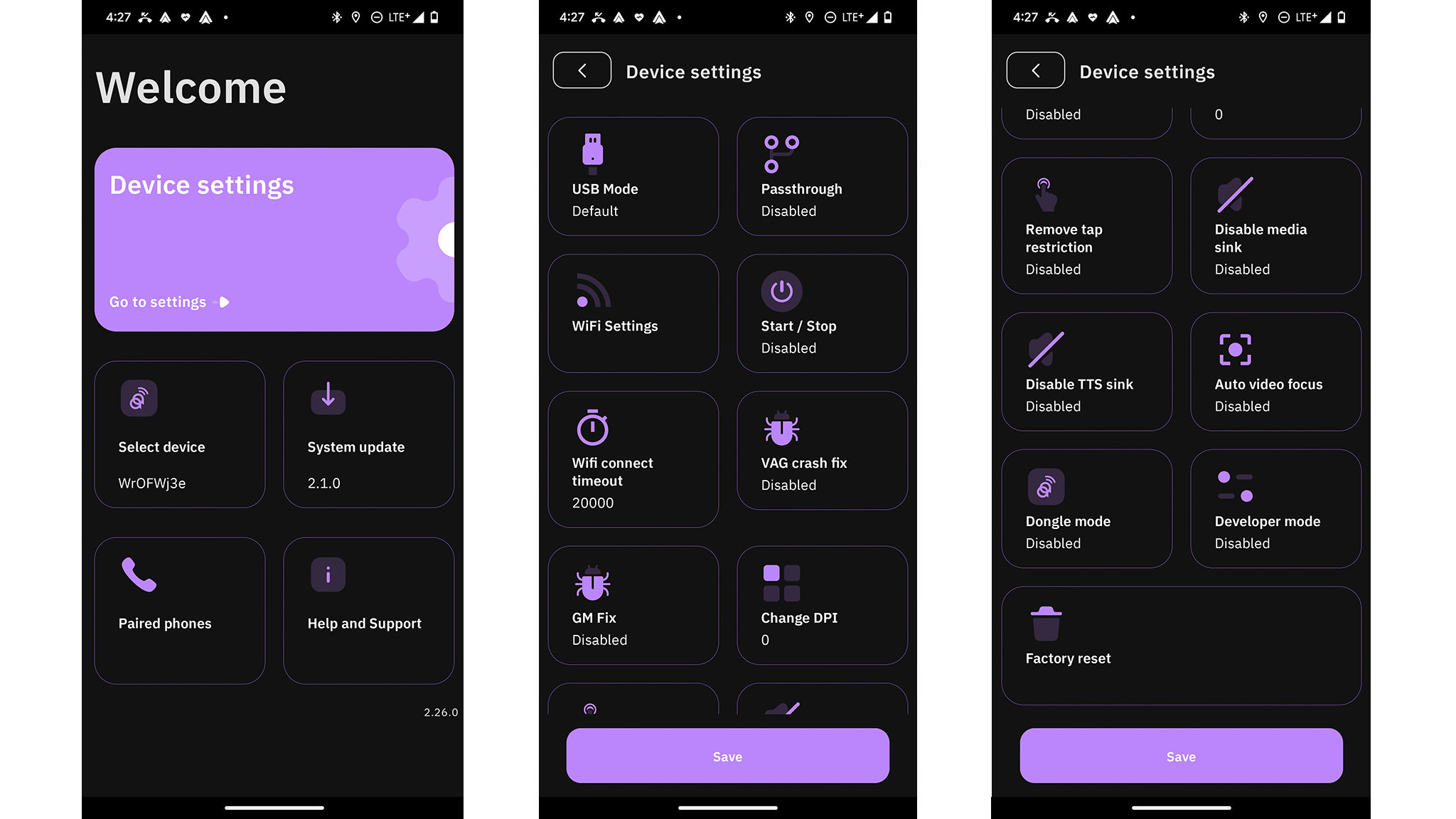
The important part is that if you just want to leave it as is, the dongle just works. When Android Auto appeared, I could use apps, talk to Google Assistant, and search for points of interest exactly like I would if I were plugged in to do all that. Latency isn't an issue when doing all those things, either, which is why this setup feels a lot like plugging the phone in always did.
I also like that AAWireless makes it easy to pair more than one phone. This is great if you've upgraded to a new device or your partner wants to connect as well. You will need to keep the original phone away and turn Wi-Fi and Bluetooth off to do this, plus go through all the initial steps to set it up, including downloading the app on the second phone.
As of this review, there is no easy way to switch between the two phones. The dongle will always look to connect with the last phone you set it up with, and when it can't find it, it then moves on to the other one. So, while it's very cool to have more than one phone work, the functionality afterward isn't seamless yet.
AAWireless: What's not good
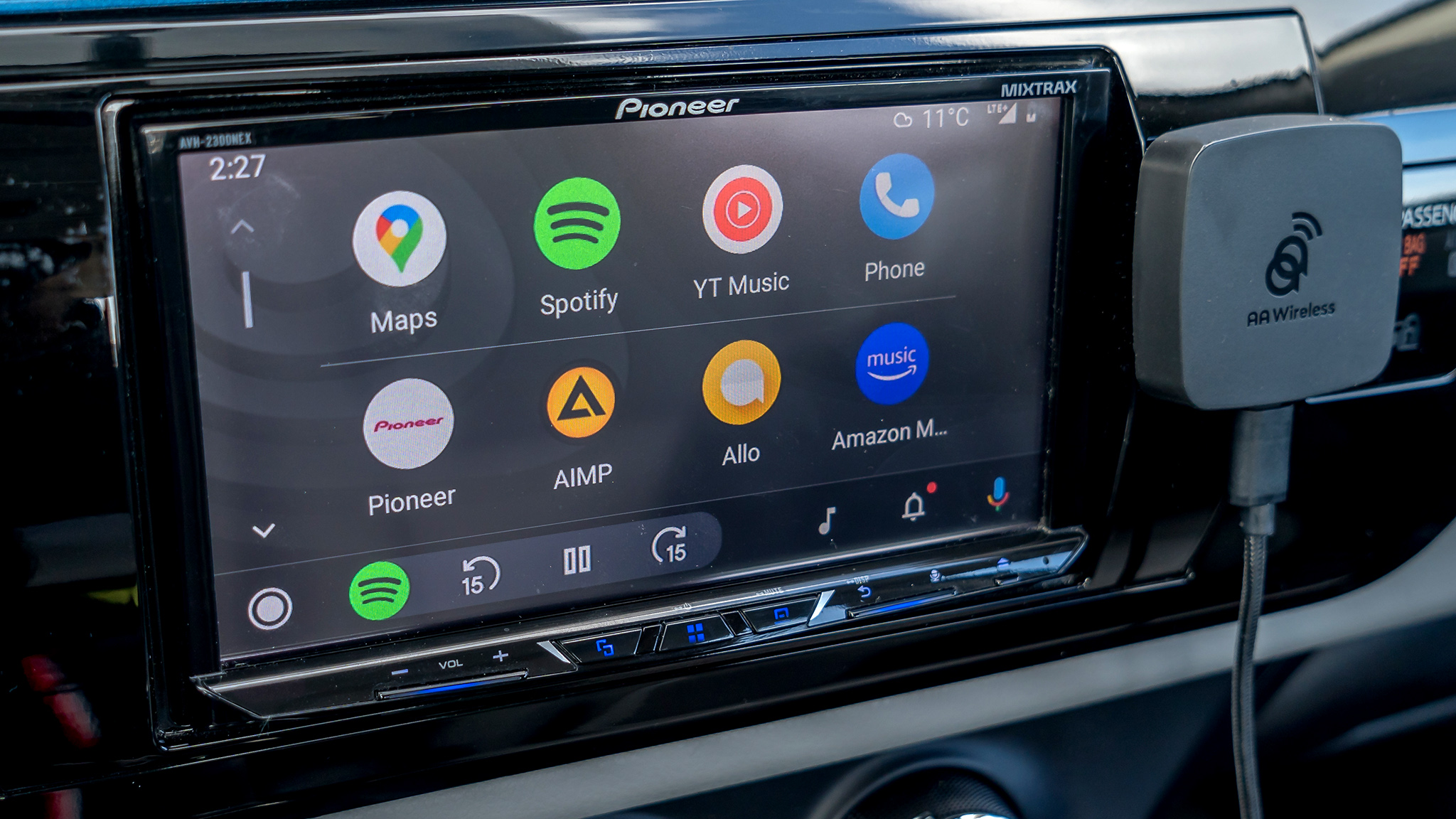
AAWireless doesn't come with an adhesive pad to stick it wherever you want on the dash. I ended up using the one that came with the Motorola MA1, but given that one isn't very good, this dongle fell just as often as that one did. You can use two-sided tape or another solution, but that is entirely up to you.
I mentioned buggy connections when starting the car, and that was where I saw the most inconsistency. There were times when Android Auto would appear on my screen after a mere 10 seconds, while it took over 90 seconds in other cases. Why the discrepancy? I have no idea. I asked Emil Borconi, the man who developed AAWireless, and he posited that it may have been because I had turned on power-saving features, like a battery-saving mode. I hadn't, so it couldn't be that.
Could it have been because I was connecting to an aftermarket Pioneer AVH-2300NEX head unit instead of a factory one from an automaker? It's hard to tell, given the variance in timing, but you may or may not experience something similar once you start your car.
Freeing up your phone with the AAWireless doesn't mean your phone is entirely untethered. The wireless setup harnesses the phone's resources and, as such, sips battery life at a faster rate. You're fine if you plug in or use your car's wireless charger, something I really advise you do on longer drives. A short jaunt to run an errand won't pose a problem, but if you're commuting or road-tripping, make sure the phone is charging somewhere.
You may also notice your phone runs hotter if you are charging it at the same time you're running Android Auto wirelessly. I never encountered any overheating problems, but it was something I noticed relative to what the phone would feel like if I was running the platform through a standard wired connection.
AAWireless: Competition
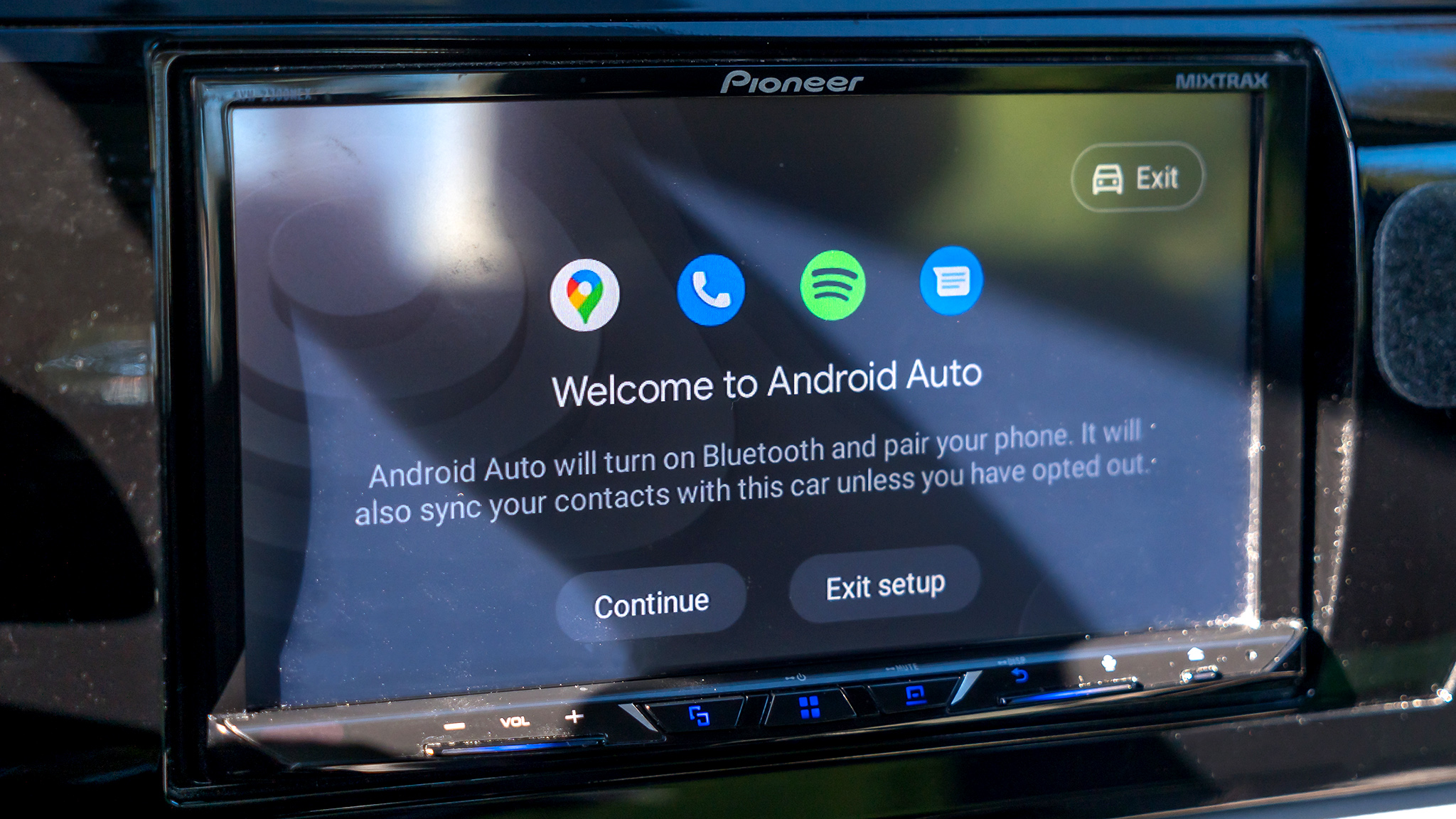
There is a growing number of dongles and gizmos enabling a wireless Android Auto connection in virtually every car that doesn't otherwise offer it. The Motorola MA1 is one of the most prominent, though it doesn't include a dedicated app to tweak features or troubleshoot potential compatibility issues the way AAWireless does.
Others, like Carsifi and Carlinkit 4.0, follow similar design principles AAWireless does, with Carsifi, in particular, including a physical button to switch between paired phones.
AAWireless: Should you buy it?
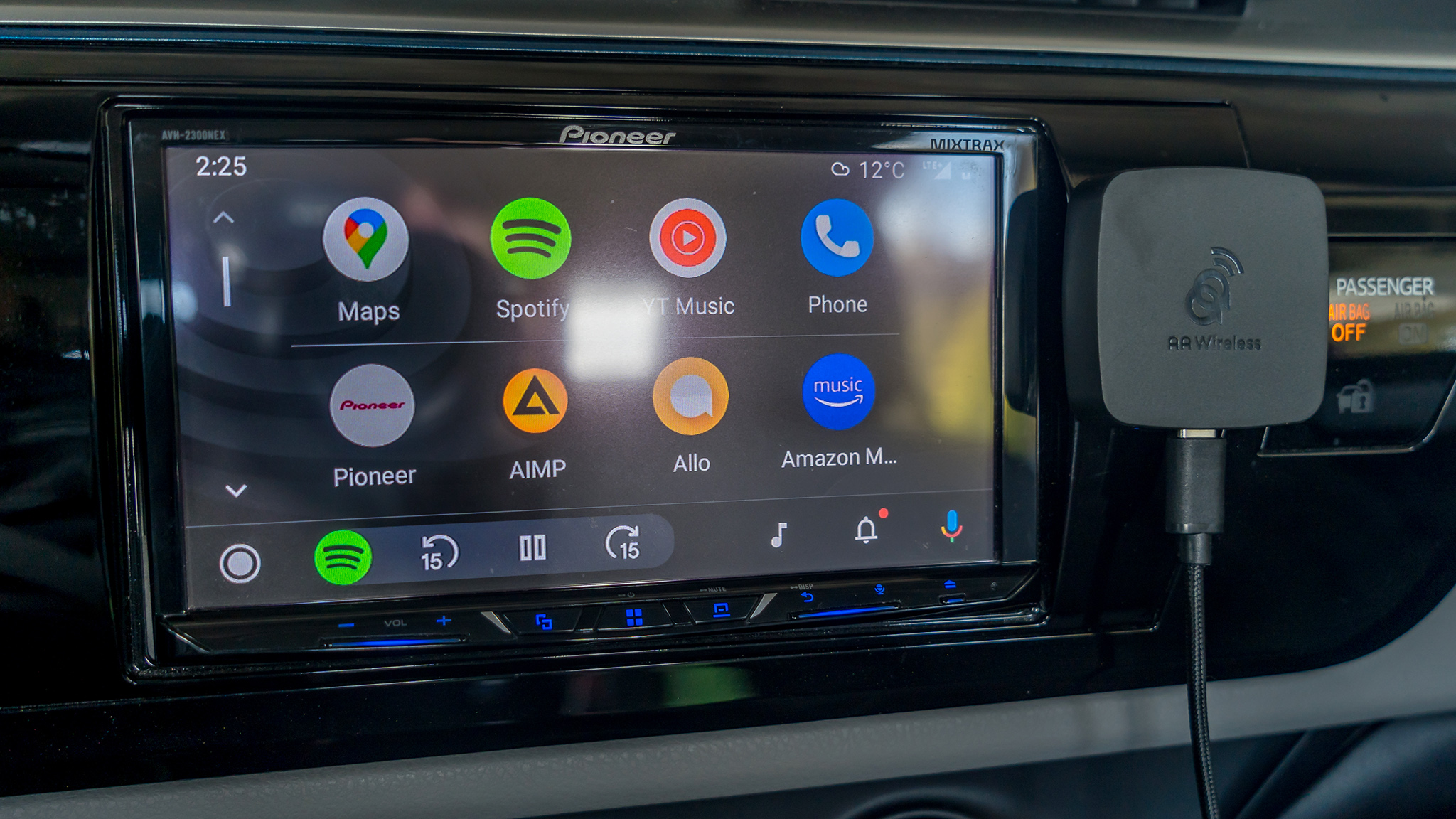
You should buy this if...
- You want wireless Android Auto
- You drive a vehicle with no other option but wired Android Auto
- You want to charge your phone wirelessly
- You want app support for tweaks and troubleshooting
You shouldn't buy this if...
- You are fine with plugging in to run Android Auto
- You don't have a wireless charger
- You're not sure where you would place it
Running wireless Android Auto feels liberating, especially if you've never experienced it before. AAWireless always focused on delivering that, and save for some potential compatibility issues the app tries to rectify, this small dongle does the job. That the app also enables firmware updates means there's room for improvement whenever that comes along.
Despite its stature, you may need to figure out where to place it, but that shouldn't be a deal-breaker when you get so much out of this device.

The AAWireless made a statement from the start by freeing Android phones to run Android Auto without plugging in. Easy to set up, and with an app to make adjustments and keep it updated, it's a nifty dongle to keep in your car.

Ted Kritsonis loves taking photos when the opportunity arises, be it on a camera or smartphone. Beyond sports and world history, you can find him tinkering with gadgets or enjoying a cigar. Often times, that will be with a pair of headphones or earbuds playing tunes. When he's not testing something, he's working on the next episode of his podcast, Tednologic.
